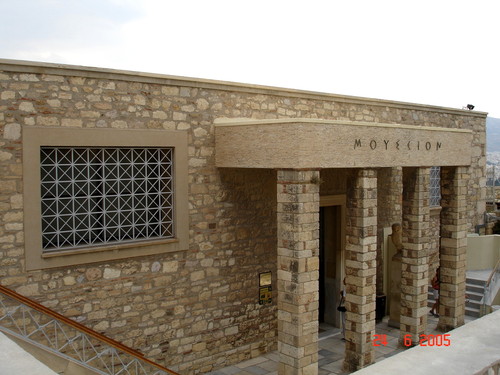
Nota: O Museu mudou de localização - ver nota no final do post
Dentro do complexo da Acrópole podemos visitar o seu museu, nele estão colocadas muitas peças encontradas neste local como as esculturas originais das Cariátides que decoram o Erechtheion, são também conhecidas como Korai (virgens). No museu apenas estão cinco, a sexta foi recolhida por um Lord inglês e está exposta no British Museum.
Note: The museum changed location - see note at end of post
Within the complex of the Acropolis we can visit it's museum, there are many pieces put found on this site like the original sculptures that decorate the Caryatids of the Erechtheion, are also known as Korai (maidens). In the museum are only five, the sixth was collected by an English Lord and is in the British Museum.
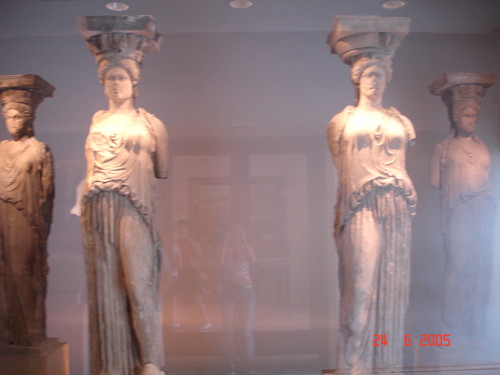
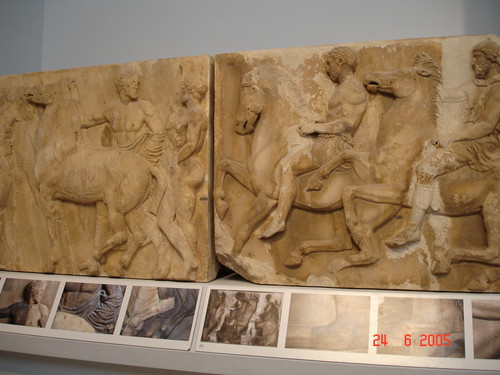
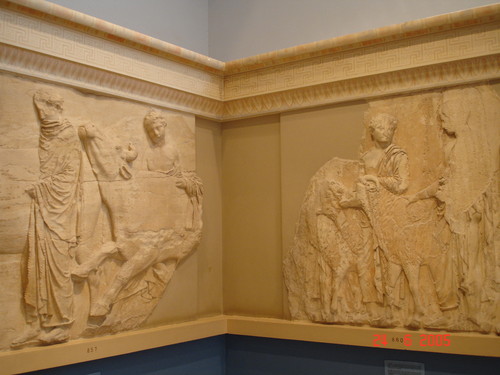
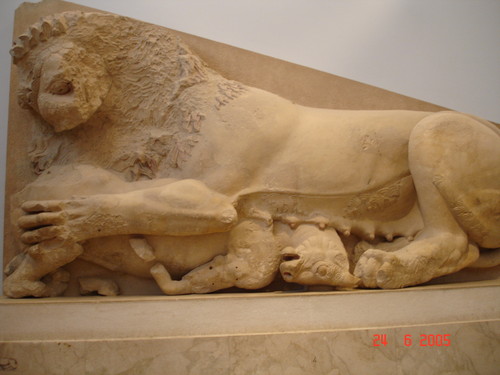
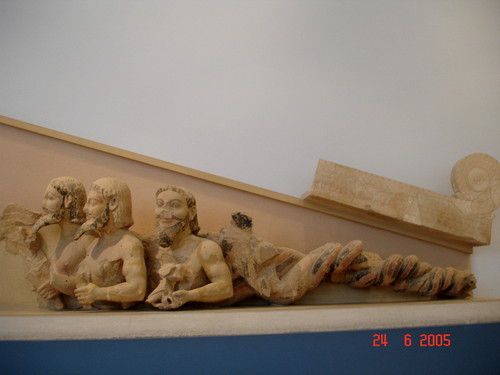
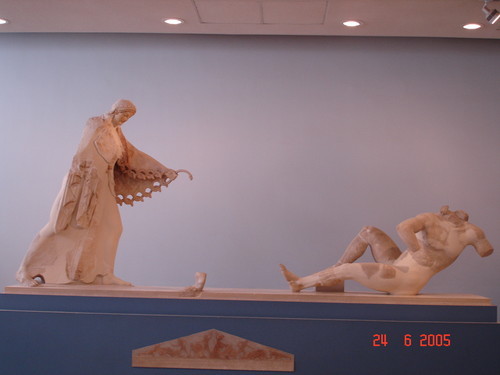
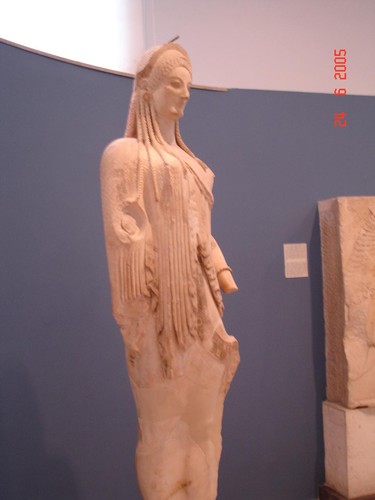
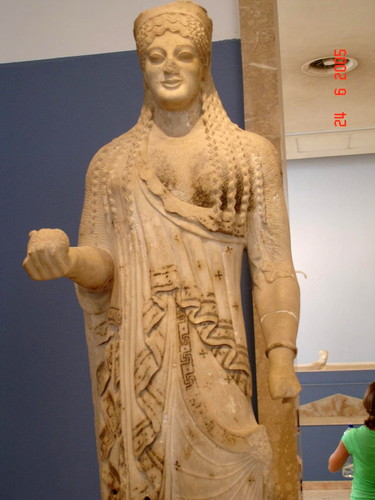
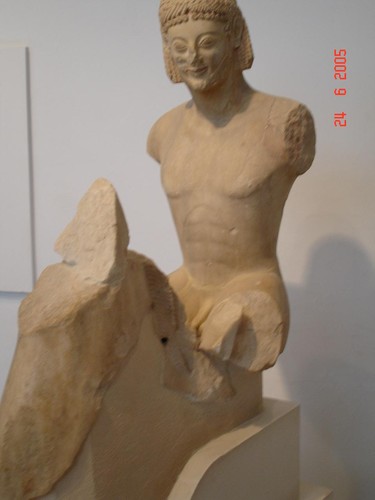
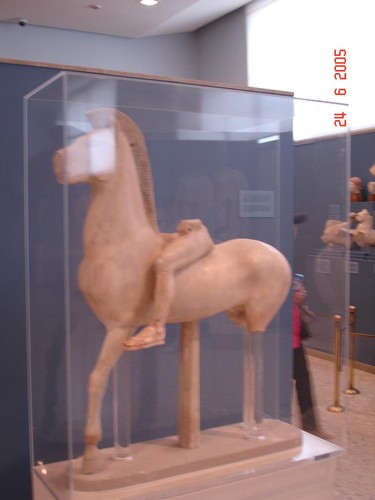
Within the complex of the Acropolis we can visit it's museum, there are many pieces put found on this site like the original sculptures that decorate the Caryatids of the Erechtheion, are also known as Korai (maidens). In the museum are only five, the sixth was collected by an English Lord and is in the British Museum.

Partes que decoravam o Parthenon podem também ser vistas aqui, nos que vemos nas fotos representam as festas de Panateneias que eram dedicadas á deusa grega de Atenas. Durava doze dias e celebrava-se de quatro em quatro anos, haviam actividades de desporto, rituais, sacrificios e eventos músicais.
Parts that decorated the Parthenon can also be seen here, in the potos we can see some that represent the parties of Panateneias that were dedicated to the goddess of Athens Greek. Lasted twelve days and was celebrated every four years, had sports activities, rituals, sacrifices and music events.


No museu estão expostas algumas peças que provam a existência do templo Hekatompedon, dizem que este tinha sido construído no local onde agora está o Parthenon. Em algumas das cenas que vemos nos relevos, um leão está a caçar um veado e noutra que faria parte do frontão do templo, podemos ver um Tritão (filho de Podeidon) de três corpos. Este templo teria sido construído em 570 a.C.
In the museum there are displayed a few pieces that prove the existence of the temple Hekatompedon, they say that this had been built where the Parthenon is now. In some of the scenes we see in the reliefs, a lion is hunting a deer and another that would be part of the pediment of the temple, we can see a Triton (son of Podeidon) of three bodies. This temple would have been built in 570 BC.


Ainda no período Arcaico, podemos ver mais esculturas que fariam parte do frontão de um outro templo dedicado a Atenas, nela estaria representada a batalha Gigantomachy, na qual os deuses do Olimpo liderados por Zeus combateram contra os gigantes liderados por Alcyoneus.
Also in the Archaic period, we can see more sculptures that were part of the pediment of another temple dedicated to Athens, in it we see represented the Gigantomachy battle, in which the Olympian gods led by Zeus fought against the giants led by Alcyoneus.

Numa outra secção podem ver-se várias esculturas de Kore ou Korai, o nome dado a estas representações femininas da época arcaica. Utilizadas muitas vezes como oferendas aos deuses, podiam também elas representar a deusa Perséfone (a quem também chamavam de Kore ou Cora). Há várias representações algumas bastante elaboradas em termos de detalhe e o que realmente impressiona é que muitas se conseguiram conservar sendo que datam de 500 a.C.
In another section one can see several sculptures or Korai Kore, the name given to these female representations of archaic time. Often used as offerings to the gods, they could also represent the goddess Persephone (who also called Kore or Cora). There are several representations some quite elaborate in terms of detail and what really impresses is that many survived through out the years since they date back to 500 BC.


Do mesmo período, podemos ver a escultura de um Kouros a cavalo conhecida como o "Rampin Rider", não está completa e a sua cabeça está exposta no Louvre, sendo que a actual que vemos no museu é uma réplica.
In the same period, we can see the sculpture of a Kouros horseback known as the "Rampin Rider" it's not complete and it's head is displayed in the Louvre, and the current we see in the museum is a replica.

O museu oferece bastante para explorar ainda que tenha uma dimensão reduzida, neste post ficam alguns dos mais importantes ou interessantes.
The museum offers plenty to explore even though it has a reduced size, in this post are some of the most important or interesting.

NOTA: O Museu a partir de 2007 mudou-se para novas instalações para um espaço bastante maior que este que tinha na Acrópole (25000 metros quadrados). Aqui fica o link para mais informações: http://www.theacropolismuseum.gr/default.p
NOTE: The Museum from 2007 moved to new premises to a much larger space that it had on the Acropolis (25000 square meters). Here is the link for more information: http://www.theacropolismuseum.gr/default.php?la=2


Sem comentários:
Enviar um comentário